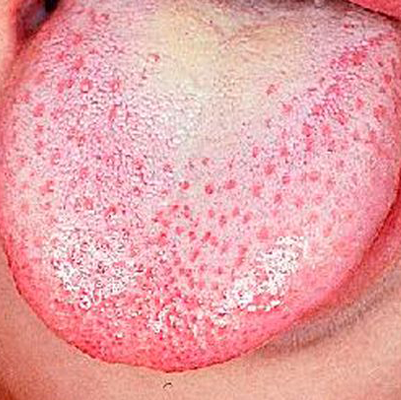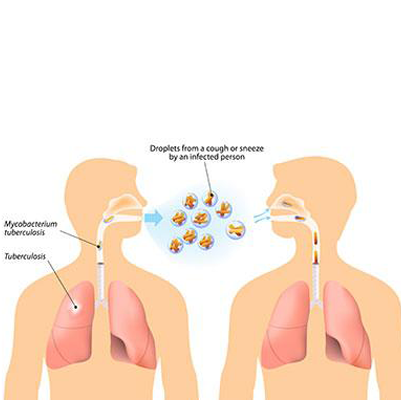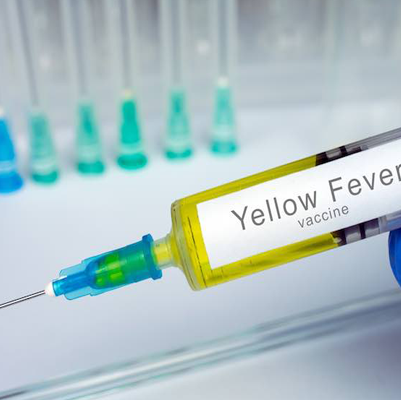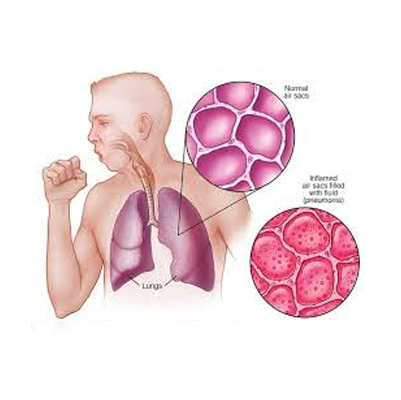Rheumatic
Rheumatic Fever
Overview
Rheumatic fever is an inflammatory disease that can develop as a complication of untreated or poorly treated strep throat or scarlet fever, which are caused by Streptococcus bacteria.
It is most common in children aged 5 to 15 years, though it can occur in younger children and adults. While rare in developed countries, rheumatic fever remains prevalent in many developing nations.
The disease can cause permanent heart damage, including valve damage and heart failure, if not addressed promptly. Early treatment reduces inflammation, manages symptoms, and prevents recurrence.
Symptoms
-
Fever
-
Painful, tender joints, often in knees, ankles, elbows, and wrists
-
Migratory joint pain (pain moves from one joint to another)
-
Red, hot, or swollen joints
-
Small, painless nodules under the skin
-
Chest pain
-
Heart murmur
-
Fatigue
-
Flat or slightly raised, painless rash with ragged edges (erythema marginatum)
Effects
If untreated or recurrent, rheumatic fever can lead to:
-
Rheumatic heart disease (permanent damage to heart valves)
-
Heart failure due to valve damage or chronic inflammation
-
Arrhythmias (abnormal heart rhythms)
-
Chronic joint pain and arthritis
-
Neurological complications, including Sydenham’s chorea (involuntary movements)
Treatment
Management of rheumatic fever focuses on reducing inflammation, treating infection, and preventing recurrence:
-
Antibiotics
-
To eradicate Streptococcus bacteria (e.g., penicillin)
-
Long-term prophylaxis may be needed to prevent recurrence
-
-
Anti-inflammatory medications
-
Aspirin or corticosteroids to reduce joint and heart inflammation
-
-
Supportive care
-
Bed rest during acute illness
-
Monitoring for heart complications
-
-
Management of complications
-
Valve repair or replacement in severe cases of rheumatic heart disease
-
Early diagnosis and treatment are essential to prevent permanent heart damage and improve long-term outcomes.

Scarlet Fever
Overview
Scarlet fever, also called scarlatina, is a bacterial infection caused by group A Streptococcus (the same bacteria that cause strep throat). It mainly affects children 5 to 15 years old.
The hallmark of scarlet fever is a bright red, sandpaper-like rash, usually accompanied by:
-
Sore throat
-
High fever
Although once considered a serious childhood illness, modern antibiotics have greatly reduced its risks. Untreated scarlet fever, however, can lead to serious complications affecting the heart, kidneys, or other organs.
Symptoms
-
Red rash that feels like sandpaper, usually starting on the chest and spreading
-
Red lines: folds of skin (groin, armpits, elbows, knees, neck) become deeper red
-
Flushed face with a pale ring around the mouth
-
Strawberry tongue: red, bumpy tongue, often with a white coating initially
-
High fever (101°F / 38.3°C or higher) with chills
-
Severely sore throat with white or yellowish patches
-
Difficulty swallowing
-
Tender, enlarged lymph nodes in the neck
-
Nausea or vomiting
-
Headache
Effects / Complications
If untreated, scarlet fever can lead to:
-
Rheumatic fever → may damage heart valves
-
Post-streptococcal glomerulonephritis → kidney inflammation
-
Ear infections
-
Sinus infections
-
Pneumonia or other systemic infections
-
Skin peeling: after the rash fades, particularly on fingers and toes
Treatment
-
Antibiotics
-
Penicillin or amoxicillin are most commonly prescribed
-
Early treatment reduces the risk of complications and shortens illness duration
-
-
Symptomatic Care
-
Fever and pain relief: acetaminophen or ibuprofen
-
Hydration and rest
-
Soothing throat: warm liquids, soft foods, or throat lozenges
-
-
Monitoring & Prevention
-
Keep child home from school until 24 hours after starting antibiotics
-
Avoid contact with others to prevent spread
-

Tetanus
Tetanus (Lockjaw)
Overview
Tetanus is a serious disease caused by a bacterial toxin from Clostridium tetani that affects the nervous system. It leads to painful muscle contractions, particularly in the jaw and neck, and can interfere with breathing, posing a life-threatening risk.
Thanks to the tetanus vaccine, cases are rare in developed countries, but the disease remains a risk for those not up to date on vaccinations, especially in developing regions.
There is no cure for tetanus; treatment focuses on managing complications until the effects of the toxin subside.
Symptoms
Symptoms usually appear a few days to several weeks after the bacteria enter a wound (average 7–10 days). Common signs include:
-
Jaw muscle spasms and stiffness (trismus)
-
Neck stiffness
-
Difficulty swallowing
-
Stiffness of abdominal muscles
-
Painful body spasms lasting several minutes, often triggered by minor stimuli like drafts, noise, touch, or light
-
Fever
-
Sweating
-
Elevated blood pressure
Effects / Complications
If left untreated, tetanus can lead to:
-
Severe muscle spasms and rigidity throughout the body
-
Fractures from intense muscle contractions
-
Respiratory failure due to chest muscle involvement
-
Autonomic dysfunction (high blood pressure, irregular heart rate, excessive sweating)
-
Death, particularly in older adults or unvaccinated individuals
Treatment / Management
1. Hospitalization and Supportive Care:
-
Intensive monitoring for breathing and heart function
-
Mechanical ventilation if breathing is compromised
2. Medications:
-
Tetanus immune globulin (TIG) to neutralize toxin
-
Antibiotics (like metronidazole) to stop bacterial growth
-
Muscle relaxants or sedatives to reduce spasms
3. Wound Care:
-
Thorough cleaning and removal of contaminated tissue
4. Vaccination:
-
Tetanus vaccine booster for prevention and to reduce severity
5. Long-term Recovery:
-
Rehabilitation for muscle weakness or joint stiffness

Tuberculosis
Tuberculosis (TB)
Overview
Tuberculosis (TB) is a potentially serious infectious disease primarily affecting the lungs, although it can affect other parts of the body.
-
TB is caused by the bacterium Mycobacterium tuberculosis.
-
It spreads through airborne droplets when an infected person coughs, sneezes, or talks.
-
People infected with TB bacteria may not show symptoms (latent TB) but can develop active TB later.
-
Untreated TB can be fatal, and some strains are resistant to common antibiotics.
-
Effective treatment involves taking multiple medications for several months to fully eradicate the infection and prevent drug resistance.
Symptoms
Signs of active TB include:
-
Persistent cough, sometimes with blood
-
Chest pain or discomfort when breathing or coughing
-
Unintentional weight loss
-
Fatigue and general weakness
-
Fever
-
Night sweats
-
Chills
-
Loss of appetite
Complications / Effects
-
Spread of infection to other organs (e.g., kidneys, spine, brain)
-
Lung damage and chronic respiratory problems
-
Development of drug-resistant TB if treatment is incomplete
-
Severe illness or death if left untreated
Treatment / Management
-
Antibiotic Therapy:
-
Typically involves multiple antibiotics taken for 6–12 months
-
Common drugs: isoniazid, rifampin, ethambutol, pyrazinamide
-
-
Monitoring and Support:
-
Regular follow-ups to ensure adherence to medication
-
Supportive care for nutrition, hydration, and symptom relief
-
-
Preventive Measures:
-
Screening and preventive treatment for latent TB
-
Vaccination with BCG (in some countries)
-
Infection control to prevent spread
-

vomiting
Nausea and Vomiting
Overview
-
Nausea is the uneasy sensation of wanting to vomit, while vomiting is the forceful expulsion of stomach contents through the mouth.
-
These are symptoms, not diseases, and can be acute (short-term) or recurrent depending on the cause.
-
Recurrent vomiting may indicate underlying medical conditions, and frequent vomiting can lead to dehydration, which can be dangerous if untreated.
-
Vomiting is the body’s natural response to remove harmful substances from the stomach or react to gastrointestinal irritation.
-
Gastroenteritis (bacterial or viral gut infection) is one of the most common causes in adults and typically resolves in a few days.
Common Causes
-
Infections: gastroenteritis, influenza, food poisoning
-
Indigestion or overeating
-
Motion sickness
-
Pregnancy (morning sickness)
-
Side effects of medications or toxins
Symptoms Associated with Nausea and Vomiting
-
Abdominal pain or cramping
-
Diarrhea
-
Fever
-
Lightheadedness or vertigo
-
Rapid pulse
-
Excessive sweating
-
Dry mouth and decreased urination
-
Chest pain or fainting
-
Confusion or excessive sleepiness
-
Vomiting blood in severe cases
Management / Treatment
-
Hydration: Drink small sips of water or oral rehydration solutions
-
Diet: Eat bland foods like toast, rice, or bananas when tolerable
-
Rest: Avoid strenuous activity
-
Medications: Anti-nausea medications like ondansetron or metoclopramide
-
Treat underlying causes: Antibiotics for bacterial infections, or managing motion sickness and pregnancy-related nausea
-
Seek urgent care if vomiting persists, blood is present, or signs of severe dehydration appear

Yellow fever
Yellow Fever
Overview
Yellow fever is a viral infection transmitted by a specific type of mosquito.
-
Mild cases may cause fever, headache, nausea, and vomiting.
-
Severe cases can affect the heart, liver, and kidneys, cause bleeding (hemorrhage), and can be fatal—up to 50% mortality in severe forms.
-
There is no specific treatment, but vaccination before traveling to endemic areas provides protection.
Symptoms
Incubation Period (3–6 days)
-
Usually no symptoms during this phase.
Acute Phase
Signs and symptoms may include:
-
Fever
-
Headache
-
Muscle aches (especially back and knees)
-
Sensitivity to light
-
Nausea and/or vomiting
-
Loss of appetite
-
Dizziness
-
Red eyes, face, or tongue
Toxic Phase (Severe Cases)
-
May include organ failure, bleeding, and can be life-threatening.
Prevention and Management
-
Vaccination is the most effective prevention.
-
Supportive care for symptoms: hydration, rest, and treatment of complications.
-
Avoid mosquito bites through repellents, protective clothing, and nets.

Pneumonia
Pneumonia
Overview
Pneumonia is an infection that inflames the air sacs (alveoli) in one or both lungs. The alveoli may fill with fluid or pus, leading to symptoms such as cough with phlegm, fever, chills, and difficulty breathing.
Pneumonia can be caused by bacteria, viruses, or fungi, and its severity can range from mild to life-threatening. It is particularly serious for:
-
Infants and young children
-
Adults over 65 years old
-
People with chronic health conditions or weakened immune systems
Prompt treatment is critical to prevent complications and improve recovery.
Symptoms
-
Chest pain when breathing or coughing
-
Cough, which may produce phlegm or pus
-
Shortness of breath
-
Fatigue and weakness
-
Fever, sweating, and shaking chills
-
Lower than normal body temperature (in older adults or immunocompromised individuals)
-
Confusion or changes in mental awareness (especially in adults 65+)
-
Nausea, vomiting, or diarrhea
Effects
-
Difficulty breathing, which can become severe and require hospitalization
-
Spread of infection to the bloodstream (sepsis)
-
Lung abscesses or areas of permanent lung damage
-
Exacerbation of pre-existing conditions, such as asthma, COPD, or heart disease
-
Long recovery periods and reduced ability to perform daily activities
-
Death in severe cases, especially among high-risk groups
Treatment
1. Medications:
-
Antibiotics for bacterial pneumonia
-
Antiviral medications for viral pneumonia (in certain cases)
-
Antifungal drugs for fungal pneumonia
-
Fever reducers and pain relievers (e.g., acetaminophen or ibuprofen)
2. Supportive Care:
-
Rest to allow the body to fight infection
-
Plenty of fluids to stay hydrated
-
Oxygen therapy if blood oxygen levels are low
-
Hospitalization for severe cases, especially in high-risk patients
3. Preventive Measures:
-
Vaccination against pneumonia-causing bacteria and influenza
-
Good hygiene practices (handwashing, avoiding close contact with sick individuals)
-
Quitting smoking to improve lung health
